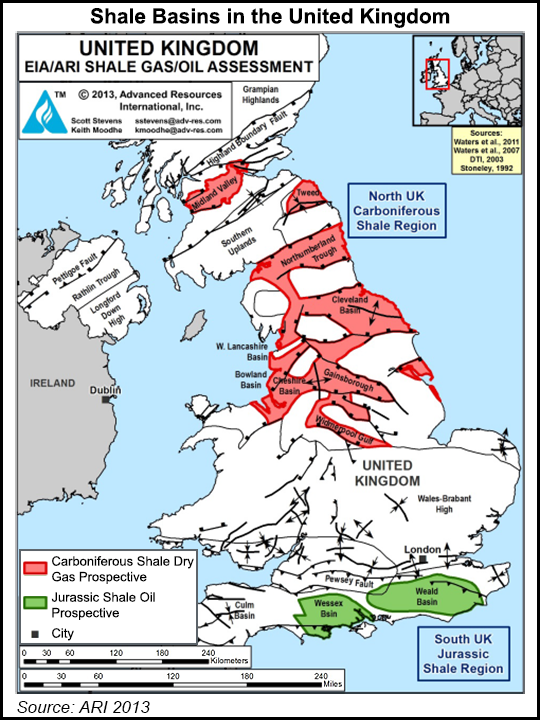Shale Daily | E&P | NGI All News Access
England’s Selenium-Rich Bowland Shale Poses Challenges, Opportunity
Researchers in Scotland say that besides an abundance of natural gas, the Bowland Shale in the north of England is also rich in the potentially toxic element selenium, which could make gas extraction risky but also has value in itself.

“The significance of the discovery lies in the risk of high levels of the element being released into groundwater during drilling or fracking operations,” the University of Aberdeen researchers said.
“A major factor to be considered during shale gas drilling is the accompanying water, which may contain chemicals that require careful treatment,” said Professor John Parnell of the university’s School of Geosciences and one of the study’s authors. The researchers published their findings in the journal Applied Geochemistry.
Selenium has also been found in some U.S. shales, Parnell said. “The samples we have analyzed from the Bowland Shale are some of the most selenium-rich in the British Isles, and far in excess of the levels of selenium found in the U.S. example. Indeed, a number of the samples we tested exceeded the far stricter European Union limits, so it is clear that any drilling to extract shale gas in the Bowland Shale area must be carefully managed.”
In addition to the UK, the study reveals similarly high levels of selenium existing in equivalent rocks in Ireland, he said. “It is well known that shales in Ireland have caused selenium toxicity in livestock, further underlining the importance of the issue.”
Despite the concerns, the study highlights opportunities that exist as a result of the high levels of selenium found in Bowland Shale. “While this is first and foremost an environmental issue, the concentration of selenium and other trace elements in extraction waters could be regarded as an opportunity,” Parnell said. “Selenium is a rare element for which demand is likely to increase, so there is a commercial incentive here which companies will no doubt be mindful of.”
Selenium has antioxidant properties and can be beneficial to humans in small quantities. It is used to treat a number of medical conditions.
Early testing of the Bowland Shale has suggested that it could be 10 times thicker than the Marcellus Shale (see Shale Daily, April 5, 2012).
© 2024 Natural Gas Intelligence. All rights reserved.
ISSN © 2577-9877 | ISSN © 2158-8023 |
